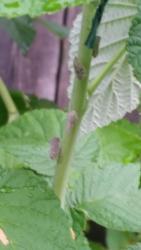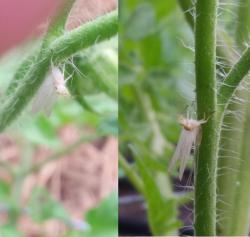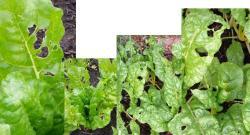First, carrots. I've posted this here before but I've got a better picture now and I'm not sure the last answer was correct. Out of ALL my garden plants, these worms are only on the carrots. They've even infected the carrots on two totally different sides of the garden but still, only carrots. They kill the leaves around them and make this silky web stuff but they don't seem to encase themselves in it. They aren't hurting the roots, but I'd like to leave some carrots to seed next year so I would like to get rid of them. I was just going to pull all the carrots on the one side of the garden where they have been but today I noticed some on the other side as well so that's no longer an option.

Next raspberries. These little hoppy things move FAST. They make a gross white stuff on the branches like mealy bugs but they aren't mealy bugs, I don't think. I don't see them eating the branches or leaves so maybe I don't care if they are there? They are getting pretty prolific though as there are now far more than there had been last week. They stick exclusively to the raspberry bushes - not even venturing over to the gooseberries. Actually, I don't tend to even see them on the thorny raspberry bush, which is right next to the thornless one they are on. (Sorry the picture is a little blurry. I fight with my phone often about putting the auto focus on the correct object. I wish I could turn auto-focus off!)

This .... thing... was on my tomato plant. No idea what it is at all. My instinct is to ignore it.

This is not a bug picture, but something is eating my chard. Whatever it is, it only likes chard. It doesn't like arugula or kohlrabi or broccoli or beans or peas or lettuce or spinach or beet greens or anything else. Only chard. And it is eating it on the sly. I've never once seen a bug of any kind on the chard. I just come out and suddenly there are more holes or whole leaves gone. Suggestions on how to make it stop?

thank you!



